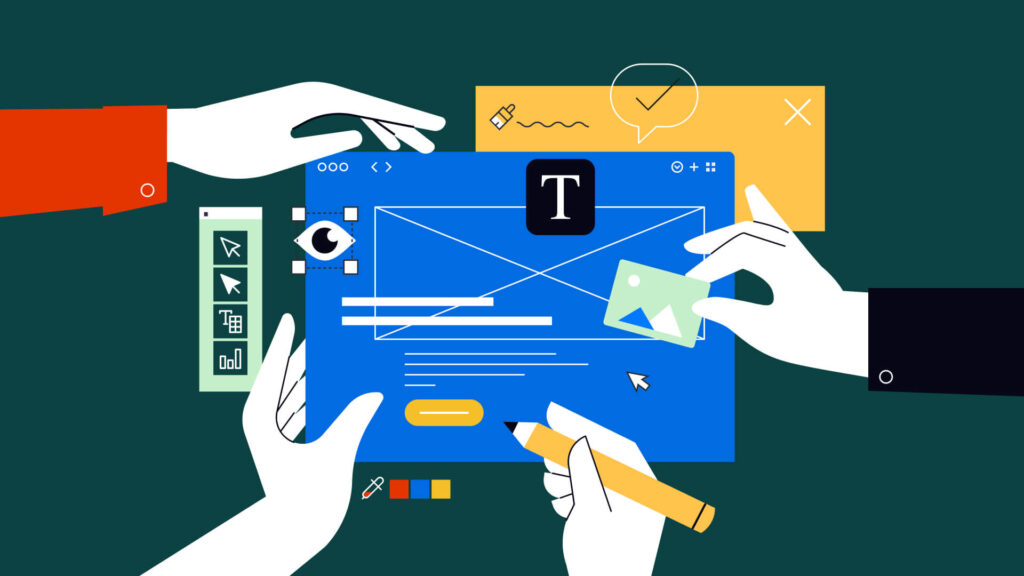Give your creative leadership a pep talk to get the most out of your creative team
Creative teams – in both design and marketing – face the task of delivering innovative campaigns and ideas constantly. Their creative brains are highly skilled in bringing new and exciting concepts to life, and they have the power to change the trajectory of a business entirely. But at the same time, creatives can burn out, lose motivation or, simply get bored if the day-to-day isn’t managed effectively and supportively.
So how do you keep creative teams motivated to keep on producing their best work, week after week? How do you avoid excessive procrastination, overworked designers, stressed-out marketers and campaigns that fall flat?
In the article, we’re covering 6 areas that will improve your design team management (or marketing team management), so you can encourage your teams through creative leadership that builds a sustainable, enjoyable working future.
1. Clear communication and goal setting
It’s no secret that teams that are aligned in their goals are more productive, and more likely to deliver higher-quality results. And honest communication is key to success – so much so, that 99.1% of those surveyed by TeamStage prefer to be part of an organization that prioritizes it.
As a leader, manager, or business owner responsible for overseeing the creativity within the business, communicating clear, measurable and actionable goals from the beginning is essential. As with everything in business, how can you get where you’re going, if you don’t know where you’re going?
In order to set clear S.M.A.R.T goals (specific, measurable, achievable, realistic and timely), you first need to asses where your teams, and the business, are starting from. What are the objectives?
Once you have your objectives, turn them into S.M.A.R.T goals for your teams to work towards. We’d recommend bringing your teams in on this process, to ensure everyone is on the same page and feels motivated by the same end goal.
Design Force tip: explaining the ‘why’ behind your business/brand objectives will get teams on board. When people understand the reasoning behind something, they’re more likely to get behind it.
2. Foster collaboration and teamwork
Much like the above point, if you can create an environment that invites team collaboration and teamwork, you’ll get higher-quality design or marketing work thanks to increased morale, and feelings of connectedness among teammates.
Strategically, we’re believers that design and marketing teams work best together, so if you have the opportunity to do so, creating space for teams to collaborate cross-functionally is a great idea. Along with scheduling time for regular catch-ups and team-building activities.
We talk more about our own processes to foster collaboration in our free e-book, Remote Working Like a Pro, as it’s a vital part of ensuring our global team members feel and act like one team working toward the same goal.
3. Manage workflow and delegate responsibilities
The benefits of implementing systems and processes are tenfold. A centralized system to keep track of tasks, projects and sprints makes working life more efficient (and less stressful) by housing everything needed in an organized place.
There are many project management tools out there – Asana, Trello, Notion, ClickUp and so on – and we encourage you to find the one that works best for you.
Your tool of choice should allow you to track timelines, assign tasks to specific team members, monitor progress and budgets, and add feedback directly within the system.
By building out a clear and efficient system like this, you can catch any delays and deal with them quickly. Plus, if team members are overwhelmed with deadlines, you can effectively re-delegate and get a bird’s eye view of the entire project from start to finish.
It’s up to you to ensure that the right people, with the right skills, are working on the right things at the right time. A regularly maintained project management tool will help you do that.
4. Embrace technology
Speaking of project management tools, the world of technology as a whole is an area to embrace for successful scaling, team management, and overall business success.
For design teams, there are plenty of tools to be utilized that will maximize efficiency and up-level design output, from Figma to Elementor and more.
For marketing teams, CRM systems such as HubSpot, social media marketing schedulers like Later, and even the emergence of AI tools like ChatGPT, all make forward planning, campaign tracking and ideation simpler – ergo, more efficient.
83% of professionals rely on technology to collaborate, don’t be afraid to embrace advancements.
5. Celebrate learning, experimentation, and innovation
Ongoing learning and development is a gift. One to be fully embraced and encouraged within any organization looking to scale, increase talent retention, and continually improve.
When designers, marketers and the like have space to learn, new skills, ideas and innovations are born. And with new skills, ideas and innovations, comes new commissions, signed deals, and fast expansion.
Consider building learning and development into your organization, creating allocated time for creative endeavours that will support both design and marketing teams. From short courses on social media marketing to learning how to improve UX design, your teams will feel empowered and motivated to put their skills into action.
And don’t be afraid to experiment, either. The variety of fonts we see on computers today started with Steve Jobs experimenting with calligraphy and typography, after all.
6. Create a feedback loop
Feedback culture may sound like a buzzword, but open communication (and feedback) is an essential part of an efficient creative team.
Leaders like you should encourage regular feedback sessions, provide opportunities for team members to share their thoughts and ideas, and create a culture of openness and transparency so that the team feels heard and valued.
A happy team is an efficient team.
Are you ready to lead your design and marketing teams to success?
Creative leadership is not a one-size-fits-all solution, but as an effective creative leader, getting to know your teams, their strengths, weaknesses, and preferences, will make you stronger overall.
Fostering an environment that encourages efficiency, collaboration, and innovation is essential for the success of design and/or marketing team management.
Seek out new approaches to leading your teams, celebrate learning, experimentation, and growth, and you’ll reap the rewards both as a team and as a business.
One final note. If you’ve gone through the above and have discovered that your design team is a few designers short of what you need, book a free demo with us here at Design Force. We’ll show you how to get vetted design support, just like our clients TikTok and HubSpot did, in just one day.



